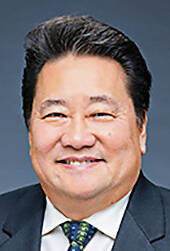With cloudy state finances, Hawaii’s ‘rainy day’ fund held for future rainy day


Hawaii lawmakers have recently considered cutting every state agency’s budget along with various special funds and capital improvement projects to pay for stunning costs related to the Maui wildfire disaster, with one very big special fund excluded.
The state has a record $1.5 billion in its Emergency and Budget Reserve Fund. Yet the ongoing scramble for emergency wildfire recovery funding at the Legislature doesn’t appear dire enough to tap what is commonly known as Hawaii’s “rainy day fund” or EBRF.
Using some of the fund to help shoulder what could be $1 billion in costs from the worst disaster in Hawaii history makes sense to some observers.
“You have a rainy day fund, and it’s supposed to be used for emergencies,” said Tom Yamachika, president of the nonprofit Tax Foundation of Hawaii. “You’ve got an emergency.”
Others believe that dipping into the fund should be more of a last resort, and that covering expenses from the Aug. 8 disaster that destroyed most of Lahaina and killed at least 101 people can be done with other resources without cutting essential state services.
“We’re not even close to looking at touching any reserves at this point in time,” Rep. Kyle Yamashita, chair of the House Finance Committee, said Wednesday.
Yamashita (D, Pukalani-Makawao-Ulupalakua) considers EBRF use necessary only to avoid a reduction in government services. “But we’re not at that point yet,” he said. “We still can work within our means.”
Under state law, use of the fund is allowed for several purposes.
One broad purpose is “to maintain levels of programs determined to be essential to public health, safety, welfare, and education.” The fund also can be used for employment programs in an economic downturn.
Another permitted use is to address any emergency declared by the governor or designated as urgent by the Legislature, and specifically “to restore facilities destroyed or damaged or services disrupted by disaster in any county.”
Restrictions on EBRF use include paying for public worker pay raises or benefits, reducing general obligation bond debt or using more than 50% of the fund’s balance in one fiscal year. However, lawmakers can change the law governing the fund, and have done so in the past.
Plenty past use
Over the fund’s 25-year history, state lawmakers and governors swayed between more conservative and liberal acts of taking money out of — and putting money into — the fund, sometimes with emergency and budget reserve purposes being at odds.
The Legislature created the fund in 1999 to receive part of a 1998 multistate settlement with tobacco companies in which $1.38 billion was expected for Hawaii over an initial 25 years followed by more as long as the companies sell cigarettes in the United States.
Then-Gov. Ben Cayetano wanted 50% of the settlement dedicated to the fund, but the Legislature set the share at 40% in 1999 and then cut it to 24.5% three years later.
Almost from the get-go, many lawmakers eyed the new fund for things perhaps not considered emergencies.
In early 2001, there was competition to use EBRF money for public school supplies or a drug treatment center.
Two bills introduced at that time by House Democrats proposed appropriating $32 million to buy school computers and textbooks as the economy was churning upward with record tourism and rising tax revenue.
A 19-member House Republican Caucus, which had unsuccessfully proposed using some of the fund to establish a drug treatment center, blocked the plan by Democrats.
Under the law, appropriations from the fund require a two-thirds vote in the 51-member House and 25-member Senate.
After Sept. 11, 2001, terrorist attacks in New York and Washington, D.C., derailed tourism in Hawaii, the Legislature in a December 2001 special session added $33 million to the fund using general revenue in preparation for hard times.
Still, contention arose over withdrawals.
Fund drain
In 2002 and 2003, the Legislature appropriated about $21 million from the fund to aid social service providers.
Appropriations in 2002 included a $400,000 grant to Wahiawa General Hospital, $500,000 for a preschool open doors program, $1 million for homeless services, and $2.2 million for substance abuse treatment program expenses.
Then-new Republican Gov. Linda Lingle clashed with the Democrat-led Legislature in early 2003, as she initially sought to divert some undelivered appropriations from the rainy day fund to help balance the state budget.
After backing off that plan, Lingle used her line-item veto power to cut $3.6 million out of a bill the Legislature passed in 2003 to provide $10.7 million from the fund to 20 social service programs.
“While the state is facing an unexpected reduction in revenues, prudent management of the state’s budget requires that funds in the emergency budget and reserve fund be saved as much as possible for future needs,” Lingle wrote in her veto message.
The Legislature responded by narrowly overriding Lingle’s veto with votes of 19-5 in the Senate and 34-14 in the House.
Hawaii lawmakers continued tapping the fund in subsequent years, including a $9.6 million appropriation in 2004 to help 39 health and human service programs.
In late 2008 as negative local economic impacts began to emerge from a U.S. recession, Lingle announced her intent to seek $40 million from the fund to help address a $1.3 billion state budget deficit.
According to state Department of Budget and Finance records, EBRF withdrawals by fiscal year totaled $27 million in 2009, $5 million in 2010 and $60 million in 2011.
Those withdrawals, after tobacco settlement deposits, reduced the fund’s balance to $10 million in 2011, down from a $74 million high in 2008.
Lawmakers also froze contributions to the fund for a couple of years, and cut future tobacco settlement contributions to 15% from 24.5%, providing more revenue for general purposes as Hawaii’s economy recovered.
Deposit boom
In 2014, automatic contributions were restored and the Legislature put an extra $50 million into the fund. Two years later, with the fund’s balance at $101 million, then-Gov. David Ige set a goal to add several hundred million dollars more.
Ige adopted a policy to have EBRF’s balance at least equal to 10% of annual general fund revenue, which in 2016 would have been $680 million.
The policy strove to position the state to withstand a recession based on past recession impacts, and also to help reduce bond debt interest costs by bolstering the state’s credit rating. Reserves, and many other things, factor into ratings by credit agencies.
Some critics of Ige’s policy argued that squirreling away so much revenue wasn’t as important as providing financial relief to residents struggling with high costs of living.
“It sounds good — it’s going to sound good to the average taxpayer who thinks it’s a good thing to save money, but if we’re just sitting on money that is not being put to good use today when there are a lot of good uses for it, then I don’t think we’re being responsible,” Randy Perreira, executive director of the Hawaii Government Employees Association, said at the time.
The nonprofit Hawaii Appleseed Center for Law and Economic Justice also expressed concerns with Ige’s policy.
Victor Geminiani, who then was the organization’s co-executive director, said at the time, “I’m a fiscal conservative, and I believe that you really have to watch how you spend dollars, but at some point you’ve got to deal with the current realities, not necessarily the future contingencies.”
Ige’s plan was only temporarily set back by the coronavirus pandemic, which caused a sharp economic downturn in 2020 that triggered heavy use, and then replenishment, of the fund.
The EBRF balance dropped from $378 million in 2019 to $59 million in 2020, and then rebounded to $320 million in 2021 in part due to federal aid.
Flush with more cash in recent years, lawmakers pumped up the fund to $974 million in 2023 and then to roughy $1.5 billion currently. Tobacco settlement proceeds of roughly $4 million to $5 million also have gone into the fund in recent years.
Present dilemma
Now, leaders in the Legislature and the administration of Gov. Josh Green don’t want to tap the fund despite some fear of an emerging financial emergency.
All state departments were instructed by the chair of the Senate Ways and Means Committee four weeks ago to draft 10% and 15% budget-cut plans to prepare for possible austerity measures given uncertain Maui wildfire recovery costs.
Luis Salaveria, Budget and Finance director, on Feb. 20 told members of the committee, which oversees budget appropriations, that there was considerable uncertainty over wildfire expenses but that there could be a nearly $400 million shortfall in the 2024 fiscal year ending June 30.
Meanwhile, Maui County asked for $402 million from the state over three years to help with its wildfire costs.
Salaveria told the Ways and Means Committee on Feb. 29 that Green’s fiscal policy is to have reserves at least equal to 20% of annual general fund revenue, which this year and next year is expected to be near $10 billion.
This 20% includes unappropriated or unused revenue, the rainy day fund and about $170 million in a hurricane relief fund. EBRF’s $1.5 billion balance alone represents 15%.
Sen. Donovan Dela Cruz, Ways and Means chair, told agencies in the budget reduction preparation memo that a $1.5 billion general fund cash balance last fiscal year could dwindle to $154 million by the end of next fiscal year, and that maintaining a 20% reserve is needed to avoid damaging the state’s credit rating.
“Tapping into the EBRF must be seen as a last resort after reductions to operations have been examined,” Dela Cruz (D, Mililani-Wahiawa-Whitmore Village) said in the memo.
As part of other efforts to cover Maui wildfire expenses, Ways and Means sent an emergency appropriation bill, Senate Bill 582, to the House on March 5 permitting Green’s administration to transfer about $37 million from about 30 special state funds and accounts to the general fund.
Two days later, the House sent the Senate a bill that would cancel the state’s long-planned $400 million redevelopment of Aloha Stadium in order to save $50 million in cash and cancel a $350 million bond appropriation.
“We should also identify other projects that may fall under the nice-to-have category and look for potential cost savings to help us balance our budget,” Rep. Andrew Garrett (D, Manoa), lead introducer of House Bill 2664, told colleagues before they approved the measure to kill the Aloha Stadium project in a 35-14 vote.
On Wednesday, the House sent the Senate a draft state budget with $1 billion for Maui wildfire recovery representing 10% of general fund spending.
On Friday, Green said in a statement, “At this point, using the rainy day fund is not something that needs to be considered given the large carry over balance that can be used to support the recovery costs. However, if, at some point, the use of rainy day funds is explored, I will be thoughtful about it and ensure that it is one part of a holistic range of options that is considered.”



